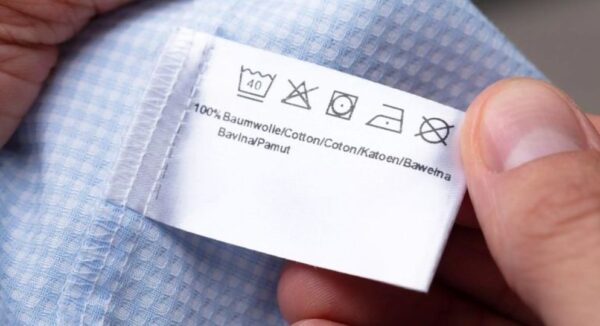Lifestyle
5 toxic fabrics that can be harmful to your vaginal health

Our bodies are amazing, and our intimate areas are especially delicate.
Just like you wouldn’t wear a scratchy outfit all day, it’s important to choose clothes that are gentle, breathable, and keeps your vagina healthy and comfortable.
Certain fabrics can trap moisture, irritate the skin, and disrupt the natural balance of good bacteria down there.
So, let’s talk about 5 fabrics that might not be the best choice for your lady parts, and explore some comfy, breathable alternatives.
1. Polyester
Polyester is a popular fabric because it’s wrinkle-resistant, affordable, and comes in a variety of colours and styles. However, for your vagina, it’s not the best. Polyester is a synthetic material, which means it doesn’t breathe well. This can trap sweat and moisture, creating a warm, damp environment that’s perfect for yeast infections to grow.
Alternatives: Cotton is a natural fibre that allows your skin to breathe. It’s soft, gentle, and readily available. Bamboo is another great option, known for its moisture-wicking properties and hypoallergenic nature.
2. Nylon
Nylon is another synthetic fabric commonly found in underwear, leggings, and activewear. While it’s strong and dries quickly, it can be quite rough on delicate skin. The friction from nylon can cause irritation, redness, and itching.
Alternatives: Look for activewear made with a blend of cotton and spandex. Spandex provides some stretch and support, while the cotton keeps things breathable and comfortable.
3. Rayon (viscose)
Rayon, also known as viscose, might sound like a natural fabric, but it’s actually a semi-synthetic material made from wood pulp. While it can be soft and breathable, the chemicals used in its production can sometimes irritate sensitive skin.
Alternatives: If you love the feel of rayon, look for organic rayon or bamboo rayon. These options are often processed with gentler chemicals and might be less irritating. However, cotton or a cotton blend is always the safest bet.
4. Lace
Lace can be beautiful and add a touch of romance to your lingerie. However, the intricate details and delicate stitching can trap moisture and irritate the skin. Additionally, some lace might contain synthetic fibres that further contribute to discomfort.
Alternatives: If you love the look of lace, choose lingerie with minimal lace details or lace trims made from cotton. Opt for cotton or breathable mesh for the main part of your underwear.
5. Spandex (in large amounts)
Alternatives: Look for activewear made with a blend of cotton and spandex. Choose shapewear that fits comfortably and doesn’t dig into your skin. Opt for looser-fitting clothing whenever possible.
Bonus tip: watch out for harsh dyes and fragrances
Besides fabric choice, it’s important to be mindful of dyes and fragrances used in clothing. Harsh chemicals can irritate the delicate skin in your vaginal area. Opt for underwear and clothing dyed with natural dyes and free of added fragrances.
Your vagina is a self-cleaning wonder. It maintains a healthy balance of good and bad bacteria on its own. By choosing breathable, comfortable fabrics and avoiding harsh chemicals, you can support this natural balance and keep your intimate area healthy and happy!
Additional points to consider
- Listen to your body: If you experience any discomfort, itching, or redness after wearing certain fabrics, switch to something more breathable.
- Change regularly: Don’t wear the same underwear for days on end. Change into fresh underwear daily, especially after sweating or exercising.
- Practice good hygiene: Wash your vaginal area with clean water always.







